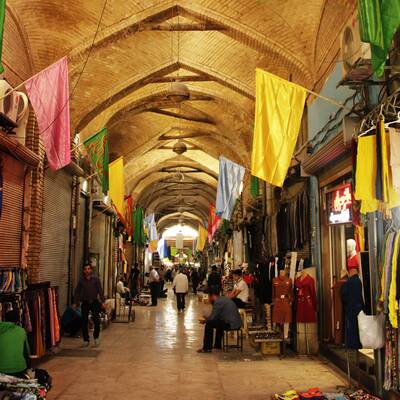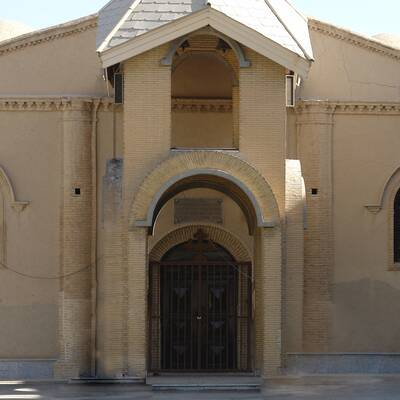Arak Four-Season Museum (four-season bath) is one of the most beautiful monuments in terms of architecture and tiling in contemporary Iran which can be considered to be the greatest historical bath in Iran; the elegance of this place is so far as we can claim that it is still remained unrivaled among all Islamic countries. The existence of painting works depicting four seasons inside the bath has been the cause of its naming. This building was built by Haj Mohammad Ibrahim Khansari (born in 1232 A.H- died in 1297A.H) in time of Ahmad Shah Qajar. This is the only bath in Iran where a special section has been considered for religious minorities.
This unique complex is located in the eastern side of the previous Shapour Street and the current Dr. Beheshti Street (Abbas Abad). construction of this monument was coincided with the establishment of Arak city approximately 100 years ago, during Qajar period. The bath with approximately 16000 m2 area has been constructed in such a way that its required water supplied through the flowing water of Qanat; therefore, in order to easily supply water and maintain the heat, the bath floor was constructed 3 to 3.5 meters below the street level. One of the main architectural characteristics of the building is using eight columns and a high dome made of brick, gypsum and lime mortar. In addition to the mirroring and Rasmi Bandi, other interesting architectural decorations in all internal parts of men’s Sarbineh include the special method of piling, molded and spiral tiling, picturesque stucco, historical paintings and arabesque patterns.
Today, out of 16000m2 area of the building, approximately 5000m2 area including men’s Sarbineh, hothouse, and the vestibule between the hothouse and dressing room has been dedicated to the museum where lots of invaluable objects related to pre Islamic and Islamic periods are kept there. Historical objects like ceramic wares and bowls, different coins, Qajar marriage certificates, books and handwritten manuscripts, copper and etching wares, old bathroom utensils, clay jars, spinning tools, a part of the historical and valuable Mihrab of Saveh Central Mosque, carpet weaving tools and the objects discovered from excavations in Zolfabad ancient site in Farahan are now kept in this museum.


.jpg)
